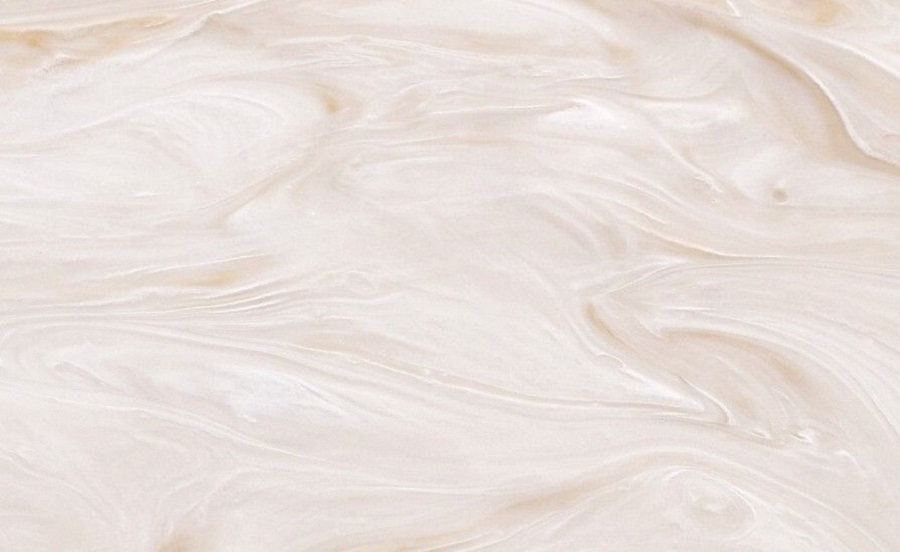As one of the charter members of the Stone Fabricators Alliance (SFA) and a frequent user of the StoneAdvice.com Forum, I have had ample opportunity to see what the end users biggest complaints are. Over the years, I have noticed a trend that customers are continually complaining about the seams in their new countertops. All these customer complaints about new granite countertops can’t be good for the industry as a whole. Why is it that with other countertop materials, the industry standard is a seam that can hardly be seen, yet with granite, this is not the case? Isn’t it time that we begin to change the industry standard for seams and provide our customers with a countertop they can be proud of?
First, let’s identify some of the reasons that are making the seams so visible. Poor color or vein matching of the stone; chipping of the stone from a bridge saw cut; out-of-square or out-of-straight cut; improper adhesive color matching; and slabs not pulled together tightly are all major contributors to these unsightly seams. I know most of you are thinking “Our seams are actually pretty good,” but what if you could learn how to make them even better with a repeatable process that may not cost you any extra time?The Seam PhantomTM by NSI Solutions is a new tool that was specifically designed to take a saw cut edge and turn it into a precisely dressed seam edge that can result in a nearly invisible seam.
Improving seam appearance
There are many ways to improve the appearance of a seam. The first step in the process of creating a quality seam is to carefully match the stone on each side of the seam. If the stone color doesn’t blend through the seam, nothing else you do will make the seam disappear. Color/vein matching can be done using the latest technology, or it can be done “old school” in a completely manual shop. Some of the new vein-matching photo technology that is out there can be a real time saver. Most of us are not fortunate enough to have access to this technology, so we need to find ways to get the match manually. I will explain how I do this in a manual shop later.
The second step is to remove the small chips from the cutting process and make a perfectly straight seam edge on each piece. There are many ways in which this can be done. Dressing the seams on a CNC is a good option for those that have this technology. Another option (developed by my friend Chris Checketts) is gluing Corian strips to the granite before cutting the seam on the saw. Even back-beveling the seam edge and dressing it by hand with a 100-grit resin pad will work in the hands of a skilled fabricator. A tool such as the Seam PhantomTM, which is specially designed for back-beveling and dressing seams is another excellent option.
The third step is to properly level the pieces so there is no dip or peak at the seam. If the stone is not flat across the seam, there will be a light deflection at the seam. A bad light deflection at the seam is sure to create an unhappy customer.
The fourth step is to have a good set of seam setters and the proper adhesive for gluing the seam. Finally, if you want to consistently produce perfect seams, you will want to learn how to top polish. You don’t necessarily need to top polish the seams on every job, but it is a good skill to have when you run across a bowed slab and can’t get the seam flat.
Here we have used the cams on the Gorilla Grips to flatten out a slightly bowed seam.
Invisible seams
Now, let’s get into the details as I explain the entire process of how I create “invisible seams” in my shop. This process is simplified when dealing with consistently colored stones such a Tropical Brown, but let’s make it fun and assume we’re working with a “movement stone.” The first thing we do is a rough layout of the entire job by moving our templates around on the slabs. (We template manually with sticks and glue.) The main goal is to figure out which parts will be cut from which slabs. Exact placement of the parts will come later.
Next, we decide which slab to load and cut first. We want to cut the “worst first.” Whichever slab has that long sink run with a seam on one end and hardly any room for adjustment is the one we want to cut first. This will give us a greater chance of being able to match the seam, since the other piece has more room to be moved around on the slab. It is important to note that while cutting the pieces on the bridge saw, I cut the seam lines about 1/16 inch oversized to allow for removing the chips later.
After the first seam piece is cut, we are ready to lay out the other side of the seam. We pick up the first piece with our vacuum lifter and jib crane, and hang it over the next slab to match the seam. With this method, we are able to move the actual piece around until we find the best possible match. Once the match is found, we hold the piece right there and bump the next template against the seam and tape it down. Now, the next piece is ready to be cut, and you can be sure to have a great match.
Before the vacuum lifter was in place, we used the method of putting the off-cut from the first seam piece on top of the template for the second seam piece, and it worked pretty well, but this works better. So, until I go digital, this is the way I’ll do it. This is the result when every step of the process is followed.
Using new technology
Up until now, you probably haven’t heard anything revolutionary in my process, but this is where the magic happens in creating the perfect seam. After the edges are profiled and polished, I put the Seam Phantom to work. The Seam Phantom by NSI Solutions is a new tool that was specifically designed to take a saw-cut edge and turn it into a precisely dressed seam edge that can result in a nearly invisible seam. It can also be used to correct an out-of-square cut. The Seam Phantom is designed to be simple for anyone to operate and produce consistent predictable results on any stone or engineered stone. I use the air version in my shop. We use the same process whether it’s a straight seam or a Euro miter (offset miter/corner seam). The only difference is that the Euro miter requires a small amount of hand dressing on the short 45-degree portion of the seam.
The first step is to set up the guide, which is simplified by the use of the gauge blocks provided with the tool. Next is the back-grinding or under-cutting of the seam with a special cup wheel that is designed for use on the Seam Phantom. This removes excess material very quickly, and enables the Seam Phantom to work only the top ¼ inch of the seam. Finally, the Seam Phantom uses a 3-inch turbo wheel to dress the edge back, leaving a straight, chip-free edge. It is this finished edge that will make the seam disappear if every other step is done correctly. No matter how tight you pull a seam together, if you have chipping on the top edge, those chips will get filled in with adhesive and make the seam look wide. With the absence of any chipping on the seam edge, there is nothing for the adhesive to fill in, and the result is amazing.
On the jobsite
Now that we’ve done all the shop work, the rest of the process will be done on the installation. We go through the normal process of installing the stone, making sure to pay special attention that the seam is flat and level. We bring the stone together to make sure we have a perfect fit, which we will if everything was done correctly at the shop. Just in case something isn’t fitting perfectly, we have an electric version of the Seam Phantom on the install truck for correcting a seam on site.
Now it’s time to set and glue the seam. We use a pair of seam setters called Gorilla Grips from Monument Toolworks. We pull the seam together and then separate it just a tiny bit before leveling (leveling with the pieces touching can chip out the seam). Then we use the cams to level the two pieces. The cams are very powerful; they can even be used two straighten a bowed slab. Next we separate the seam with the Gorilla Grips about 1/8 inch and apply our adhesive. We use a product from Integra Adhesives called Surface Bonder XI that comes in a gun that makes this process very simple. All we do is fill the joint from the top. Integra makes adhesives for many applications, such as laminating and rodding, and it is available in a wide selection of colors, although the only two we use for seams are “Clear” and “Chameleon.” Since you won’t see any adhesive at the surface of the stone, matching colors is not necessary. This should actually save the installer as much time as it took to dress the seam in the shop. Once the joint has sufficient adhesive, we use the Gorilla Grips to pull the seam back together tight. I like to take the adhesive that squeezes out the top and flatten it a little with my finger while it’s still wet. After about 15 to 20 minutes, the Gorilla Grips can be removed. Then the adhesive on the surface gets scraped off with a razor blade.
In most cases, the seam would be done at this point, and your customer would be amazed. But, as I mentioned earlier, sometimes you’ll run across a bowed slab and can’t get the seam flat. If you want your seams to be perfect on every job, you will need to learn how to top polish properly. The process of top polishing would be an entire article in itself, so I won’t get into that now. If you want to learn more about top polishing or anything else stone related, go to www.StoneAdvice.com and search the archives or ask a question in the forum.

